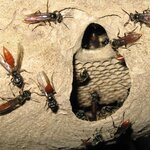Neuroscience

Diabetes is a known risk factor for cognitive decline and dementia, age-related conditions that affect memory and thinking skills.
Scientists from Mayo Clinic and Huashan Hospital in Shanghai recently explored the association between Type 2 diabetes and cognitive impairment to find out if the relationship varies in different populations - across cultures. Study participants had not been diagnosed with memory-related diseases, such as vascular dementia or Alzheimer'sdementia.
For the study, the researchers evaluated data from two large, ongoing, population-based studies: the Shanghai Aging…

Cognitive behavioral therapy (CBT) can change the brain function of people with Tourette syndrome, said researchers at the Institut universitaire en santé mentale de Montréal and the University of Montreal at the First World Congress on Tourette Syndrome and Tic Disorders in London.
Tourette syndrome (TS) is a neuropsychiatric disorder mainly characterized by motor and vocal tics in affected people. A tic is generally defined as a semi-voluntary movement or vocalization with no specific purpose.
"There is still no definitive explanation of the causes of this syndrome, but we know that tics…

By Michael Greshko, Inside Science - Quantum mechanics governs the quirky, counterintuitive way the world works at the small scales of atoms and subatomic particles.
It might also be important for helping animals understand their place in their surroundings. New research suggests that wood mice, commonly found in Europe, have a built-in compass that exploits quantum processes, the first seen in a wild mammal.
According to a study in Scientific Reports published on April 29, wood mice placed in a container prefer to build their nests in the parts of the container closest to magnetic north and…

The society you live in can shape the complexity of your brain--and it does so differently for social insects than for humans and other vertebrate animals.
A new comparative study of social and solitary wasp species suggests that as social behavior evolved, the brain regions for central cognitive processing in social insect species shrank. This is the opposite of the pattern of brain increases with sociality that has been documented for several kinds of vertebrate animals including mammals, birds and fish.
"By relying on group mates, insect colony members may afford to make less individual…

Well-practiced motor skills like riding a bike are extremely stable memories that can be effortlessly recalled after years or decades. In contrast, a new study shows that changes to motor skill memories occurring over the course of a single practice session are not immediately stable, according to researchers.
We're all familiar with the old saying that you never forget how to ride a bike and perhaps personally familiar with riding off on a bike years after last putting pedals under your feet. This experience highlights the incredible stability possible for motor skill memories, especially…

Mapping the human brain’s network of interconnections, known as the connectome is typically done with help from computational tools because recreating interconnections between different brain regions has been challenging in the lab.
Researchers at the Okinawa Institute of Science and Technology Graduate University (OIST) have developed a method to recreate connections between neurons from two different brain areas in a dish. Their findings were published in Frontiers in Systems Neuroscience.
Researchers from OIST's Brain Mechanism for Behaviour Unit,Neurobiology Research Unit, and Physics…

New, ultra-high-field magnetic resonance images (MRI) of the brain provide the most detailed images to date to show that while the brain shrinks with age, brain cell density remains constant.
The images of cognitively normal young and old adults provide the first evidence that in normal aging, cell density is preserved throughout the brain, not just in specific regions, as previous studies on human brain tissue have shown. The findings also suggest that the maintenance of brain cell density may protect against cognitive impairment as the brain gradually shrinks in normal aging.
The images…

A team of scientists and engineers at The University of Texas at Austin has identified the first sensor of the Earth's magnetic field in an animal, finding in the brain of a tiny worm a big clue to a long-held mystery about how animals' internal compasses work.
Animals as diverse as migrating geese, sea turtles and wolves are known to navigate using the Earth's magnetic field. But until now, no one has pinpointed quite how they do it. The sensor, found in worms called C. elegans, is a microscopic structure at the end of a neuron that other animals probably share, given similarities in brain…

Stem cells are especially sensitive to oxygen radicals and antioxidants shows new research from the group of Anu Wartiovaara in the Molecular Neurology Research Program of University of Helsinki.
Mitochondria are cellular power plants that use oxygen to produce energy. As a by-product they produce reactive oxygen. Excessive oxygen radicals may cause damage to cells but they are needed in small quantities as important cellular signaling molecules. One of their main functions is to control function of stem cells. Antioxidants are widely used to block the damage caused by reactive oxygen. To…

Hormone That Differentiates Sugar, Artificial Sweeteners Exists In Flies - And Could Exist In Humans
In the developed world, companies want to make food as delicious as possible and consumers want to buy what tastes good. To compensate for nutritionist concerns about sugar, artificial sweeteners began to be used.
But then there was speculation that since artificial sweeteners don't contain the calories or energy that evolution has trained the brain to expect from sweet-tasting foods, they don't fool the brain into satisfying hunger.
How do organisms distinguish between real sugar and artificial sweetener? A researcher at the University of Michigan has discovered how the brain of a fruit fly…